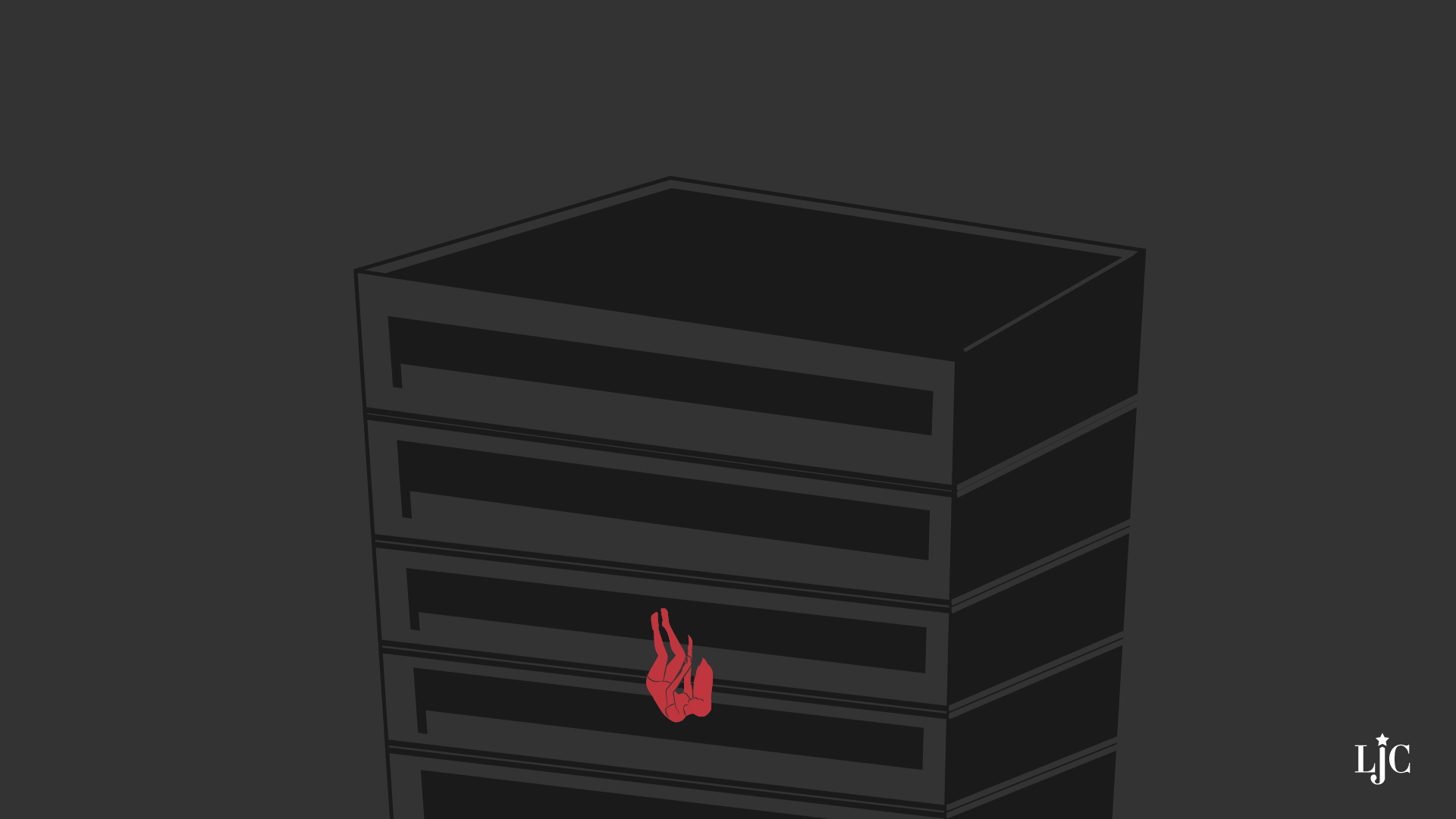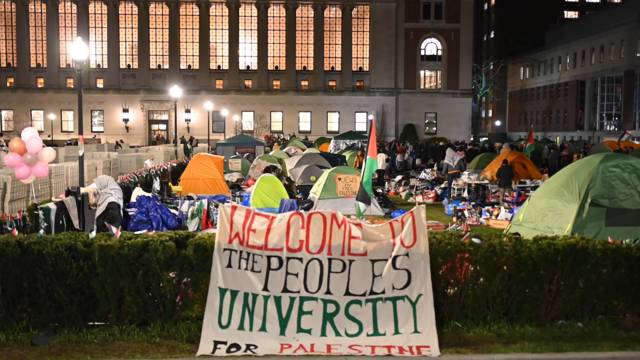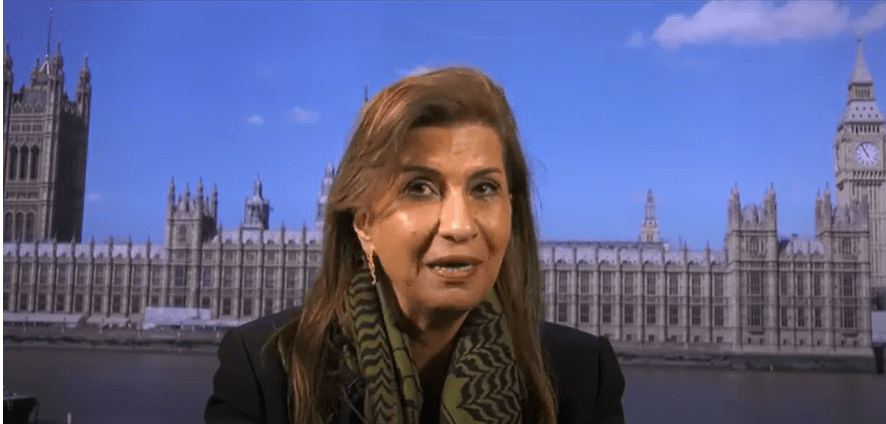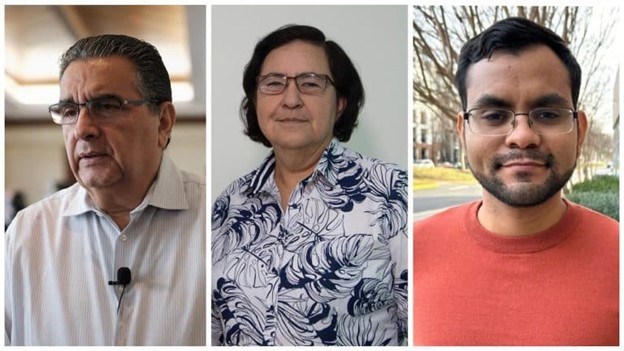HAVANA, Cuba. – The so-called K Tower, which aimed to house the tallest hotel in Cuba and that people have come to call the “López-Calleja Tower” (in reference to one of Cuba’s most powerful military-businessmen) will now become a smaller building with fewer floors than previously announced.
According to information shared with CubaNet by sources linked to Grupo de Administración Empresarial de las Fuerzas Armadas (the Armed Forces Business Management Group, GAESA, by its Spanish acronym), which owns, has invested and is executor of the building under construction, the finished project could have two independent blocks of guest rooms instead of only one as initially planned and as was told by the official press.
Far from the 42 floors that would rise to 154 meters above the ground, the building, which could be inaugurated at the end of this year or beginning of 2023, will end up being a 70 meters-high construction with two guest room blocks each rising 20 floors.
“The decision not to build the 42-story tower and to build two, 20-story twin towers instead, would meet the zoning requirements established for El Vedado,” according to a female officer of Gaviota S.A. who spoke to us on condition of anonymity. Gaviota S.A. is the military enterprise that will run the hotel.
“It would solve the problems we are facing right now due to a shortage of the technical equipment required for such a construction. In the end, common sense has prevailed, as have the protests from the community of architects who labeled the building ‘an aberration’, and also because of the costs involved in maintaining an enormous tower in the context of the economic crisis that Cuba is facing,” stated the officer.
Another officer associated with the project, but with Almest, the construction company principally responsible for erecting the edifice, confirmed to CubaNet that, in spite of the decision made by Grupo para el Desarrollo Integral de la Capital (Capital City Comprehensive Development Group, GDIC by its Spanish acronym), the main decision-maker in such affairs, and against the architectural guidelines of the zone, GAESA continues to insist in the construction of the skyscraper. Many experts consider the tower not only an unnecessary waste of resources but also “an intrusion” on Havana’s urban landscape.
“It is not the first time that the Cuban government vetoes this project. This makes it the fourth time we have had to turn back everything until finally, in 2018, we obtained the permit (…). There has been a lot of pressure from every direction even from Eusebio Leal who was firmly opposed to the tower on account of the Protected Zone status that El Vedado enjoys. Signatures were collected among architects and now Physical Panning is forcing us to abide by the urban development guidelines. In addition, the Meliá Spanish hotel chain has complained that it does not another hotel that will be higher than the Havana Libre or that will block its view and pose competition. That’s why they are invoking the laws (…). What is irrevocable is the decision that the 42-floor tower is not going up. At least not in that location on 23rd Street. What’s happening is that they are looking for other locations far from La Rampa boulevard and the Historic Quarter and more to the west of the city. For now, the two smaller towers will have to do,” stated the Almest officer.
The law exists, but nobody abides by it (least of all, the military)
In spite of its highly deteriorated condition, El Vedado continues to be a neighborhood with great heritage values. Its proximity to the ocean and its central location have kept it a preferred place for investments, especially in hotel investments. Therein lies the reason why its values could be endangered in spite of the fact that there are regulatory documents that control the occupation of square blocks, the intensity of usage, the height of buildings and above all, its image.
Ordinances -which exist since the end of the 19th century- are not obeyed even when El Vedado is a Protected Zone, as stipulated in Resolution 154 of 1999, issued by the ministry of Culture’s National Commission on Monuments. That document insists on keeping the original parceling of El Vedado as “one of the components that is subject to maximum preservation, conservation and development of public spaces, the recovery and enabling of the area’s central location and the preservation of its residential and community-life purpose” (Resolution 154, El Vedado’s Historic and Cultural Zones, Ministry of Culture, March 12, 1999).
“Regulations exist, but nobody abodes by them, least of all the military, who do whatever the hell they want,” stated Reynaldo Montiel, an architect and former professor at the Polytechnic Higher Education Institute “Jose Antonio Echeverría” (ISPJAE) in Havana, and signatory of several independent petitions to cancel the K Tower project.

“There are the Plaza de la Revolución municipality’s Urban Regulations, published in 1999 by the Physical Planning Department and by GDIC in 1998 (José Manuel Fernández Núñez, “Regulaciones urbanísticas de la Ciudad de La Habana,” GDIC, Havana, 1998), but those are documents and literature that few people know they exist and nobody consults, not even in the Faculty of Architecture or the Faculty of Law. Students egress from the university thinking that, when it comes to urban development and architecture, anyone with power can do what he or she wants (…). El Vedado has very clear regulations about what can and cannot be built, and that hotel was rejected by several commissions as early as 2016. First, their micro-location was denied, not because of what is popularly believed about it being higher than the Habana Libre; it was denied because there is a regulation that forbids the construction of buildings higher than 25 floors or more than 77 meters high, that was the real reason. To try to better their argument, they even referred to the Habana Libre itself and the Focsa building, with no regard for the fact that these buildings violated the urbanistic landscape, that they were themselves intrusions imposed in violation of those norms (…). A giant concrete-and-glass screen in that area of La Rampa boulevard was ridiculous, not only because of its visual impact but also because that zone’s electrical and hydraulic networks are overused and were not designed for buildings of such magnitude. They can’t fix the serious problems at the Habana Libre or the Focsa building, and they are going to create another one? We are talking about almost 600 guest rooms that, if 70% occupied, will have a negative impact in every possible way, including transportation and roads. Even if not occupied, due to maintenance requirements, it will represent an enormous waste of resources. Whoever came up with this idea must have been crazy,” stated the professor.
According to testimony given by several members of the commission that rejected the K Tower project between 2016 and 2018 (the year it was finally approved, against the decision of the experts), the meetings held to analyze the viability of this construction were a mere formality to get immediate approval hopping there would be no opposition.
“There was a little bit of everything: pressure, blackmail, intense corruption, but surprisingly, we who opposed the project were a greater number than those who caved in,” according to a prominent architect who spoke to us on condition of anonymity for fear of reprisals. “The project was rejected not so much because of its implicit violation of the ordinances, but because it was an evident monstrosity, totally out of context, difficult to fit in with its surroundings. Between 2016 and 2018, I received all kinds of proposals aimed at my giving approval to the project and convincing the other architects to do the same. I said no every time. That almost cost me the cancellation of two projects I was working for Gaviota. But I made such a racket that the threat didn’t go beyond that. That is why when I saw that the project was approved in spite of the rejection of the commission, I was not surprised. They were going to do it no matter what. We were a mere formality,” stated our expert source (the architect), further adding this statement about the existing urban regulations:
“The laws we have encourage the disorder. Few of them are accessible, the rest are all over the place, in random offices, and nobody consults them. Nobody knows them. Each individual interprets them to fit his or her needs.”
Architect Enrique Lanza pointed out the inherent weaknesses of the existing urbanistic regulations which he felt were responsible for the constant violations, in an article titled “La grande churrete de La Habana: Taller para las regulaciones urbanísticas de El Vedado” (“Regulaciones urbanísticas. Ciudad de La Habana. El Vedado”. Authors’ collective coordinated by the Provincial Office of Physical Planning of the City of Havana (DPPF-CH) and the Office of the Historian of the City of Havana, 2007).
According to Lanza, “occasionally, they are difficult to understand due to the language used and also their structure; they are organized somewhat irrationally; they proscribe too much and prescribe too little, that is, they mention what is forbidden instead of suggesting how to do things well.”
He also indicates that they lack the graphic information necessary to make the text easier to understand; he says they are based on a functional and not morphological zoning which makes it difficult to regulate themes about its urban and architectural image; and more importantly, they include legal loopholes that lend themselves to foul play, or worse: to schemes during the process of micro-location established by the existing investment regulations in Cuba.
Its elevation is reduced, but the investment costs rise
Although it will not become the skyscraper that GAESA intended, “K Towers” –in the plural- will still feature a similar number of guest rooms (564) and will have more service and retail areas and restaurants. A new swimming pool might be added to the project.
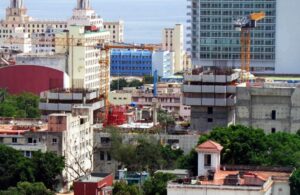
“The new project will have an infinity pool in one of the towers; the towers will also connect with each other on the last floor,” according to another Gaviota S.A. source who spoke to us on condition of anonymity. “At this time, both towers are being built, and the finishes have been completed for the first and second floors of each tower, at a cost of US$3,000 per square meter for standard guest rooms and as much as US$5,000 per square meter for luxury rooms which make up more than half of the 564 guest rooms (…). With respect to the original project, there has been an increase in building costs because the original calculations were US$2,000 (per square meter) for standard rooms and a lesser number of luxury guest rooms at US$4,000 (per square meter). This doesn’t take into account furniture and fixture costs, nor the cost for the new service areas which is calculated as part of guest room costs in the budget (…). All these changes will probably delay the inauguration of the project until the second half of 2023,” added our source, who stated that the cost per square meter of guest rooms, in this hotel alone, is above the median of all hotel investments in the island, and even in the Caribbean basin, for four and five-star hotels. This detail has sparked the attention of investors and has been described as a negative factor in the various reports. However, this doesn’t seem to worry anyone at the helm of GAESA.
“Construction cost of a hotel guest room in Cuba normally fluctuates between US$1,000 to 1,500 per square meter, before furniture and fixtures; it could be higher for a four or five-star hotel. But in the case of “K Towers”, the costs are outrageous, never before seen in Cuba (…). It has to do with the present world crisis, everything is more expensive, but still, this is too much, and still, that has not been reason enough to put a stop to this construction and wait until better times. That project knows no limits. If one has to purchase a square meter of marble in Italy, someone goes and pays whatever the asking price, and brings it here,” were our source’s closing words.
Recibe la información de CubaNet en tu celular a través de WhatsApp. Envíanos un mensaje con la palabra “CUBA” al teléfono +1 (786) 316-2072, también puedes suscribirte a nuestro boletín electrónico dando click aquí.



